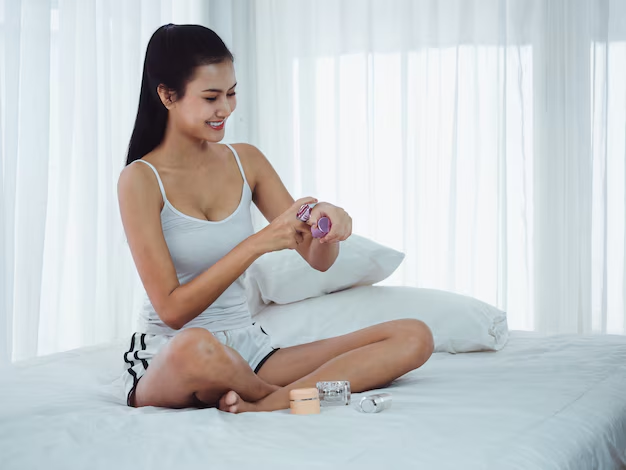Achieving a Clear Complexion: A Comprehensive Guide to Reducing Acne Redness
Nobody enjoys waking up to a fresh breakout, especially when it’s accompanied by distressing redness. Whether you're gearing up for a big event or simply seeking the confidence that comes from clear skin, reducing acne redness is a common concern for many. In this guide, we'll explore practical ways to manage and alleviate the redness associated with acne, allowing you to step out with confidence and ease.
Understanding Acne Redness
What Causes Acne Redness?
Acne redness is primarily a result of inflammation. When acne occurs, the skin responds to clogged pores and bacteria with an inflammatory response, which often leads to the swelling and redness we associate with pimples. Knowing the root cause can help inform your approach to managing the condition.
Types of Acne That Cause Redness
Several types of acne can cause redness, but understanding the specific kind you're dealing with can help tailor your approach. Here are a few common culprits:
- Papules: These are inflamed bumps without pus, usually red and sore to touch.
- Pustules: Similar to papules but contain pus in the center, often surrounded by red skin.
- Cysts: Deep inflamed bumps that can be very painful and lead to greater redness and scarring.
Strategies to Calm Acne Redness
1. Skincare Routine Essentials
A consistent skincare routine tailored to your skin type can significantly help in managing redness. Here's how to structure it:
- Gentle Cleansing: Use a mild cleanser twice daily to remove dirt and oil without over-drying your skin.
- Exfoliation: Incorporate gentle exfoliation to remove dead skin cells, but limit this to 1-2 times a week to avoid irritation.
- Moisturizing: Choose a non-comedogenic moisturizer to keep skin hydrated and aid its natural barrier function.
- Sun Protection: Use sunscreen daily with at least SPF 30. UV rays can exacerbate redness and inflammation.
2. Cooling Treatments
Using cool compresses can soothe inflamed skin. Simply wrap ice cubes in a cloth and apply them to the red areas for a few minutes to reduce swelling. Cooling masks or gels that contain ingredients like aloe vera or chamomile can also provide relief.
3. Over-the-Counter Solutions
Look for products containing salicylic acid or benzoyl peroxide. Salicylic acid helps in exfoliating skin and keeping pores clear, while benzoyl peroxide fights bacteria that can cause acne. Start with lower concentrations to gauge skin sensitivity.
Embracing Natural Remedies
1. Green Tea Power
Green tea is known for its anti-inflammatory properties. Applying a brewed green tea bag or using products with green tea extract can help calm redness and irritation.
2. Aloe Vera's Soothing Touch
Aloe vera gel, thanks to its cooling and healing properties, can be applied directly to the skin to alleviate redness. Opt for pure, unscented aloe to avoid irritants.
3. Honey and Its Benefits
Honey, particularly manuka honey, has natural antibacterial and anti-inflammatory properties. A thin layer applied as a mask can soothe sensitive skin.
Considering Lifestyle Adjustments
1. Diet and Hydration
What you eat can significantly impact your skin health. Staying hydrated and consuming a diet rich in omega-3 fatty acids can help reduce inflammation. Foods to consider include:
- Fatty fish like salmon
- Walnuts and flaxseeds
- Green vegetables
2. Stress Management
Stress can trigger inflammation, exacerbating acne and redness. Incorporate stress-relieving activities like yoga, meditation, or regular exercise into your routine to help manage stress levels effectively.
3. Sleep Importance
A good night’s sleep allows the body, including the skin, to repair itself. Aim for 7-9 hours a night to ensure optimal skin recovery and to help with reducing redness.
Avoiding Common Missteps
Over-Treatment Pitfalls
It can be tempting to overuse products in hopes of quick results, but this often leads to further irritation. Stick to your routine and give products time to work, noting that some improvements can take weeks to become evident.
Picking and Squeezing Woes
Though it might be tempting to pick at acne, this can worsen redness, scarring, and spread bacteria. Resisting the urge can help your skin heal more effectively.
When to Consult a Professional
If your acne redness persists despite your efforts, it might be time to see a dermatologist. They can provide personalized guidance and may suggest treatments such as topical prescriptions or light therapy that can offer more impactful results.
🔍 In Summary: Your Path to Reducing Acne Redness
- Develop a Routine: Consistency with cleansing, moisturizing, and sun protection aids in long-term skin management.
- Utilize OTC Products: Start with low-concentration salicylic acid or benzoyl peroxide.
- Explore Natural Remedies: Consider applying green tea, aloe vera, or honey.
- Food and Lifestyle: Eating anti-inflammatory foods and managing stress promotes skin health.
- Be Patient and Cautious: Avoid over-treating and picking to prevent further irritation.
By following these guidelines and being patient with your skin, you can effectively reduce the redness associated with acne and enjoy a healthier, clearer complexion. 🌿✨
